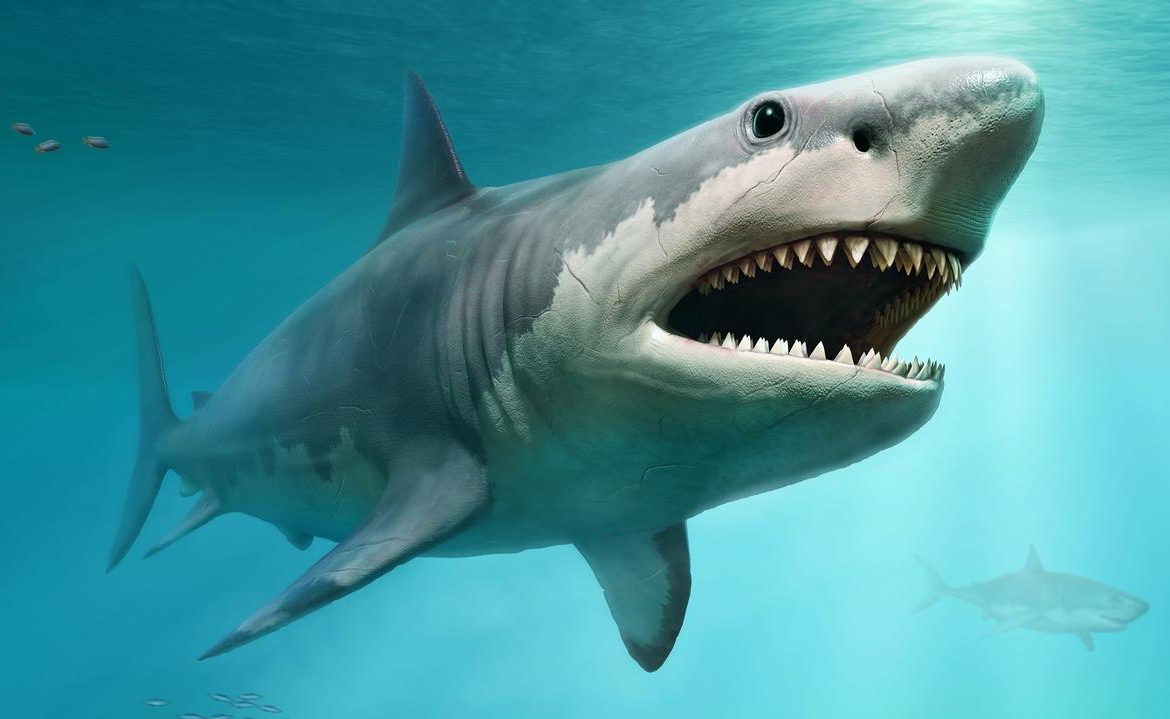A team of German-American scientists set out to investigate where Otodus megalodon – the world’s largest shark – occupies the food chain. Researchers hope to learn more about the prehistoric life of these animals. Thanks to the analysis of the remains of megalodon teeth, it turned out that they can compete for food with the white sharks (Carcharodon carcharias) known to us.
Megalodon lived about 23 to 3.6 million years ago. They inhabited oceans around the world and may have reached 20 meters in length. For comparison, the largest modern white sharks (Carcharodon carchariasIt is only six meters long.
In the study, the scientists analyzed the ratio of stable zinc isotopes in the tooth remains of prehistoric sharks and compared the results with data from modern white sharks. This new method allowed scientists to study the megalodon’s nutritional level and thus information about its position in the food chain.
Megalodon – visualizationWarpaint / shutterstock
They checked the enamel remains
Analysis of stable zinc isotopes in enamel, a highly mineralized fraction of teeth, is comparable to analysis of the more well-known nitrogen isotope in dental collagen, an organic tissue in dentin that has been studied to evaluate animal material consumption. In this case, the method will not be effective.
“Collagen was not preserved during the time period studied, so conventional methods were not feasible,” explained Jeremy McCormack, lead author of the study and a researcher at the Institute of Evolutionary Anthropology. Max Planck and Johann Wolfgang Goethe University Frankfurt.
“We have demonstrated for the first time that dietary zinc isotope fingerprints are preserved in the enamel of shark tooth remains,” added Thomas Totkin, professor at the Johannes Gutenberg University Institute for Geosciences in Mainz.
The researchers looked at the remains of animals that lived in the early Miocene (about 20.4 to 16.0 million years ago) and the early Pliocene (about 5.3 to 3.6 million years ago). Then they compared it to data on modern sharks.
“We observed some consistency in the results, which increases our confidence in the method and suggests that there may be slight differences in zinc isotope values at the base of marine food webs,” said Sora Kim, a professor at the University of California. Merced.
Great White Shark (Illustration)stock struggle
At the top of the food chain
Next, the scientists analyzed the ratio of zinc isotopes in the teeth of the ancestors of megalodon – species Otodus chubutensis, who lived in the early Miocene. They then compared these results to information obtained from examining the teeth of modern sharks.
– Our results showed that both megalodon and its ancestors were indeed apex predators [a więc znajdującymi się na szczycie łańcucha pokarmowego – przyp. red.] said Michael Griffiths, a professor at William Paterson University in New Jersey. “But what was really remarkable was that the zinc isotope values for sharks in early Pliocene North Carolina pretty much indicate that early white sharks had the same nutritional level as the much larger megalodon,” he added.
This means that great white sharks and megalodon can exist at the same time and compete for food.
“It is possible that these findings indicate at least some overlap between the victims caught by the two types of sharks,” said Kensho Shimada, a professor at DePaul University in Chicago. “While more research is needed, our results seem to confirm the possibility of megalodon food competition with the great sharks of the early Pliocene,” he added.
Scientists are pleased that the new method of research could make learning about the past much easier.
Our method demonstrates that zinc isotopes can be used to study the diet and feeding ecology of extinct animals over millions of years. Jeremy McCormack, the study’s lead author, concluded that it could also be applied to other groups of fossil animals, including our ancestors.
Main image source: Warpaint / shutterstock

“Music specialist. Pop culture trailblazer. Problem solver. Internet advocate.”







